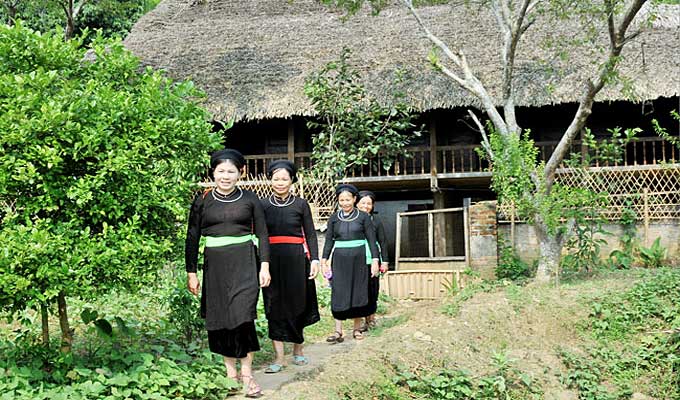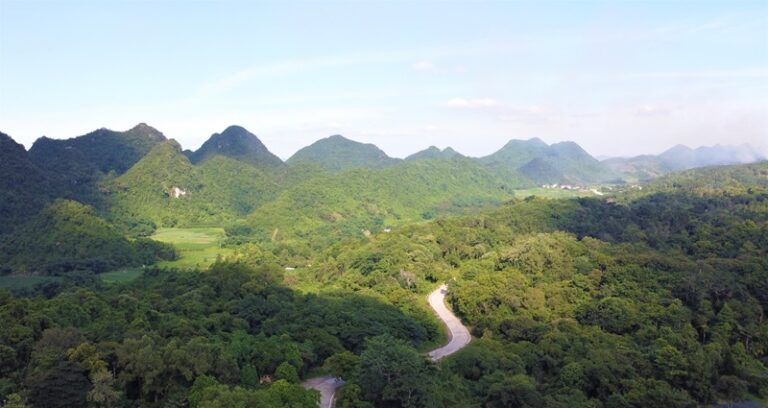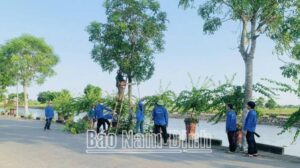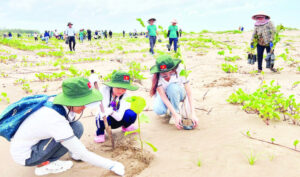It's hard to see the old stilt houses built by the Tay ethnic people of Nghia Do Commune if you don't get close to Khau A mountain range.

A Tay community is gathered in the valley of Nghia Do, Bao Yen District, the northern province of Lao Cai. Coming to this area, tourists are wowed by the spectacular countryside and the rich local culture.
The national road 279 leads to a pass through piled up mountains and passes through Nghia Do Valley. The village is surrounded by the Khau A, Khau Ria and Khau Choong mountains and is bisected by the Nam Luong River.
Centuries ago, Tay people from the northern province of Ha Giang arrived here and built their community. Nghia Do has long been known as a residential area of the Tay, resplendent with old houses and unique traditional customs.
Tourists are attracted by both the gorgeous landscape and local culture. Upon visiting, tourists have a chance to stay with local people in the unique architecture of century-old stilt houses.
There are about 50 old houses left. Each house took several months to a year to build, with men traveling deep into the forests of the surrounding high mountains to find the best wood.
"A house on stilts is a holy symbol and a cultural space of the people," said village patriarch Ma Thanh Soi.
"No matter how poor or rich people are, they try to find wood to build a house where many generations of the family will reside," he said.
Nguyen Van Su, owner of a 50-year-old house, said it took five months for him and other men of the family to gather and chop the wood from the surrounding forest.
"We often build houses that nestle into the hill or mountain side. That makes them stand firm and avoid floods," he said.
The architecture and its decoration embody the Tay ethnic culture. Each house has three fires. The largest is in the middle of the house where guests are received. This is the central fire that keeps the house warm and is the source of the other fires.
The second fire is set beside the elders to keep them warm, and the third is used for cooking and is set in a separate room.
Once strange people came and asked to buy the house at a price which would have been enough for Su and his five-member family live on for a year, but they refused to sell.
"The house will stay in my family for generations. We are born here and will die here, so it's not for sale," he said.
In recent times, life has been getting easier and many people can afford to build a new house, however, they still preserve the old stilt houses as a heritage for future generations.
"They are a cultural space for us to receive tourists and tell them about our traditional culture," said patriarch Soi.
"In the old days, the area was full of thick forests and beasts," said Soi.
"When the Tay people came, they built up the village, planted fields and developed the trade of weaving brocade."
"Each family owns a loom no matter how rich or poor they are. All the young girls learn to weave before getting married. They make skirts for themselves. On their wedding day, they bring pillows and blankets they made themselves as gifts for their in-laws."
"The Tay people favour quadrangular patterns arranged symmetrically that symbolise the harmony between people and the universe, the yin and yang," said Soi.
Soi is happy to welcome tourists to his house. He also introduces them to the Tay's treasure trove of proverbs and folk tales.
He has spent much time collecting and taking note of the largely oral culture that is passed down through the generations. The hand-written pages preserve over 300 proverbs, folk tales, traditional recipes, rituals and customs.
When visiting Nghia Do Commune, tourists have a chance to stay in the old houses, listen to folk tales and enjoy xoi co, a glutinous rice cooked with palm fruit that is a specialty of the Tay people.
From the 11th to 12th lunar months, people pick ripened palm fruits to make xoi. The palm fruit are simmered for 20 minutes and the seeds and skin discarded. Only the pulp is used to make xoi co. The palm oil adheres to the glutinous rice making the dish buttery and delicate.
When it is getting dark, we leave the village. The warm welcome of the local people, the taste of xoi co, and the scent of cooking smoke still linger in our minds.















